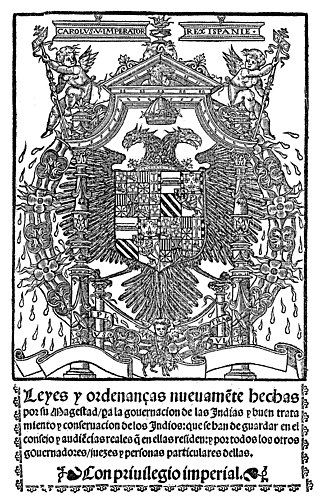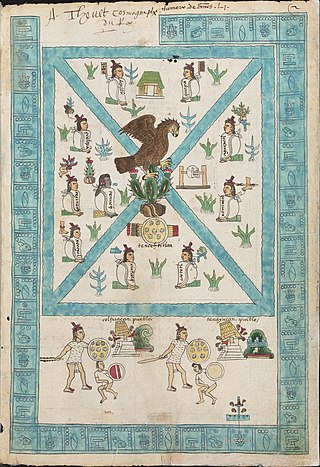
The Aztecs were a Mesoamerican culture that flourished in central Mexico in the post-classic period from 1300 to 1521. The Aztec people included different ethnic groups of central Mexico, particularly those groups who spoke the Nahuatl language and who dominated large parts of Mesoamerica from the 14th to the 16th centuries. Aztec culture was organized into city-states (altepetl), some of which joined to form alliances, political confederations, or empires. The Aztec Empire was a confederation of three city-states established in 1427: Tenochtitlan, city-state of the Mexica or Tenochca, Texcoco, and Tlacopan, previously part of the Tepanec empire, whose dominant power was Azcapotzalco. Although the term Aztecs is often narrowly restricted to the Mexica of Tenochtitlan, it is also broadly used to refer to Nahua polities or peoples of central Mexico in the prehispanic era, as well as the Spanish colonial era (1521–1821). The definitions of Aztec and Aztecs have long been the topic of scholarly discussion ever since German scientist Alexander von Humboldt established its common usage in the early 19th century.

In Aztec mythology, Tōnacācihuātl was a creator and goddess of fertility, worshiped for peopling the earth and making it fruitful. Most Colonial-era manuscripts equate her with Ōmecihuātl. Tōnacācihuātl was the consort of Tōnacātēcuhtli. She is also referred to as Ilhuicacihuātl or "Heavenly Lady."

The encomienda was a Spanish labour system that rewarded conquerors with the labour of conquered non-Christian peoples. The labourers, in theory, were provided with benefits by the conquerors for whom they laboured, including military protection and education. The encomienda was first established in Spain following the Christian reconquest of Moorish territories, and it was applied on a much larger scale during the Spanish colonization of the Americas and the Spanish East Indies. Conquered peoples were considered vassals of the Spanish monarch. The Crown awarded an encomienda as a grant to a particular individual. In the conquest era of the early sixteenth century, the grants were considered to be a monopoly on the labour of particular groups of indigenous peoples, held in perpetuity by the grant holder, called the encomendero; following the New Laws of 1542, upon the death of the encomendero, the encomienda ended and was replaced by the repartimiento.

The New Laws, also known as the New Laws of the Indies for the Good Treatment and Preservation of the Indians were issued on November 20, 1542, by Charles V, Holy Roman Emperor and regard the Spanish colonization of the Americas. Following denunciations and calls for reform from individuals such as the Dominican friar Bartolomé de Las Casas, these laws were intended to prevent the exploitation and mistreatment of the indigenous peoples of the Americas by the encomenderos, by limiting their power and dominion over groups of natives.

Diego de Landa Calderón, O.F.M. was a Spanish Franciscan bishop of the Roman Catholic Archdiocese of Yucatán. He led a campaign against idolatry and human sacrifice. In doing so, he burned Maya manuscripts (codices) which contained knowledge of Maya religion and civilization, and the history of the American continent. Nonetheless, his work in documenting and researching the Maya was indispensable in achieving the current understanding of their culture, to the degree that one scholar asserted that, "ninety-nine percent of what we today know of the Mayas, we know as the result either of what Landa has told us in the pages that follow, or have learned in the use and study of what he told."

The Codex Mendoza is an Aztec codex, believed to have been created around the year 1541. It contains a history of both the Aztec rulers and their conquests as well as a description of the daily life of pre-conquest Aztec society. The codex is written using traditional Aztec pictograms with a translation and explanation of the text provided in Spanish. It is named after Don Antonio de Mendoza (1495-1552), the viceroy of New Spain, who supervised its creation and who was a leading patron of native artists.

Maya codices are folding books written by the pre-Columbian Maya civilization in Maya hieroglyphic script on Mesoamerican bark paper. The folding books are the products of professional scribes working under the patronage of deities such as the Tonsured Maize God and the Howler Monkey Gods. The codices have been named for the cities where they eventually settled. The Dresden codex is generally considered the most important of the few that survive.

The Dresden Codex is a Maya book, which was believed to be the oldest surviving book written in the Americas, dating to the 11th or 12th century. However, in September 2018 it was proven that the Maya Codex of Mexico, previously known as the Grolier Codex, is, in fact, older by about a century. The codex was rediscovered in the city of Dresden, Germany, hence the book's present name. It is located in the museum of the Saxon State Library. The codex contains information relating to astronomical and astrological tables, religious references, seasons of the earth, and illness and medicine. It also includes information about conjunctions of planets and moons.

Pieter van der Moere, also known as Brother Pedro de Gante or Pedro de Mura was a Franciscan missionary in sixteenth century Mexico. Born in Geraardsbergen in present-day Belgium, he was of Flemish descent. Since Flanders, like Spain, belonged to the Habsburg Empire and he was a relative of King Charles V, he was allowed to travel to the colonies of New Spain as one of a group of Franciscan friars. Gante's group in fact arrived before the 12 Franciscans normally thought of as the first friars in New Spain. In Mexico he spent his life as a missionary, indoctrinating the indigenous population in Christian catechism and dogma. He learned Nahuatl, the language of the Aztecs, and composed a Christian "doctrina". One of his most significant contributions to Mexico was the creation of the School of San Jose de los Naturales. This was the first school set up by Europeans in the Americas.

The Ramírez Codex, not to be confused with the Tovar Codex, is a post-conquest codex from the late 16th century entitled Relación del origen de los indios que hábitan esta Nueva España según sus Historias. The manuscript is named after the Mexican scholar José Fernando Ramírez, who discovered it in 1856 in the convent of San Francisco in Mexico City.

Aztec codices are Mesoamerican manuscripts made by the pre-Columbian Aztec, and their Nahuatl-speaking descendants during the colonial period in Mexico.

Codex Ríos is an Italian translation and augmentation of a Spanish colonial-era manuscript, Codex Telleriano-Remensis, that is partially attributed to Pedro de los Ríos, a Dominican friar working in Oaxaca and Puebla between 1547 and 1562. The codex itself was likely written and drawn in Italy after 1566.

The traditions of indigenous Mesoamerican literature extend back to the oldest-attested forms of early writing in the Mesoamerican region, which date from around the mid-1st millennium BCE. Many of the pre-Columbian cultures of Mesoamerica are known to have been literate societies, who produced a number of Mesoamerican writing systems of varying degrees of complexity and completeness. Mesoamerican writing systems arose independently from other writing systems in the world, and their development represents one of the very few such origins in the history of writing.
A cabeza de barangay, also known as teniente del barrio, was the head of a barangay or barrio political unit in the Philippines during Spanish rule. The office was inherited from the Malayan aristocratic rank of datu after barangays had become tributaries of the Kingdom of the Spains and the Indies. Philip II of Spain decreed that the nobility in the Philippine islands should retain the honours and privileges they had before their conversion to Christianity and subjugation to Spanish rule.

The Codex Fejérváry-Mayer is an Aztec Codex of central Mexico. It is one of the rare Native American manuscripts that have survived the Spanish conquest of Mexico. As a typical calendar codex tonalamatl dealing with the sacred Aztec calendar – the tonalpohualli – it is placed in the Borgia Group. It is a divinatory almanac in 17 sections. Its elaboration is typically pre-Columbian: it is made on deerskin parchment folded accordion-style into 23 pages. It measures 16.2 centimetres by 17.2 centimetres and is 3.85 metres long.
The Códice de Santa María Asunción is mid-16th century Mesoamerican pictorial codex, with Nahuatl glosses, containing censuses of twelve rural communities in Tepetlaoztoc, in the Acolhua area near Texcoco. The codex contains provides important information about community economic and social structure shortly after the conquest. The editors of the facsimile edition estimate the codex was created in stages, with the core glyphic depictions drawn around 1544, with householders, cadastrals of their landholdings. They posit the alphabetic Nahuatl glosses were added later over 30-year period. The glosses include names of the householder, kin relationships, land assignments, and miscellaneous annotations. A third component the codex, called "The Asunción Land Title," is a lengthy account in Nahuatl that sets the territorial boundaries of the settlement (tlaxilacalli) of Santa María Asunción.

The Borgia Group is the scholarly designation of number of mostly pre-Columbian documents from central Mexico. In 1830–1831, they were first published in their entirety as colored lithographs of copies made by an Italian artist, Agustino Aglio, in volumes 2 and 3 of Lord Kingsborough's monumental work titled Antiquities of Mexico. They were named the “Codex Borgia Group” by Eduard Seler, who in 1887 began publishing a series of important elucidations of their contents.

Edward King, Viscount Kingsborough was an Irish antiquarian who sought to prove that the indigenous peoples of the Americas were a Lost Tribe of Israel. His principal contribution was in making available facsimiles of ancient documents and some of the earliest explorers' reports on pre-Columbian ruins and Maya civilisation.
Francisco de Borja del Paso y Troncoso was an important Mexican historian, archivist, and Nahuatl language scholar. He "was and remains the outstanding major Mexican investigator of his era, a fully accepted figure in the international group of his peers."

Mesoamerican codices are manuscripts that present traits of the Mesoamerican indigenous pictoric tradition, either in content, style, or in regards to their symbolic conventions. The unambiguous presence of Mesoamerican writing systems in some of these documents is also an important, but not defining, characteristic, for Mesoamerican codices can comprise pure pictorials, native cartographies with no traces of glyphs on them, or colonial alphabetic texts with indigenous illustrations. Perhaps the best-known examples among such documents are Aztec codices, Maya codices, and Mixtec codices, but other cultures such as the Tlaxcaltec, the Purépecha, the Otomi, the Zapotecs, and the Cuicatecs, are creators of equally relevant manuscripts. The destruction of Mesoamerican civilizations resulted in only about twenty known pre-Columbian codices surviving to modern times.















